しなやかで軽く、世代を超えて受け継がれる「大島紬」。フランスのゴブラン織り、イランのペルシャ絨毯と並び「世界三大織物」の一つに数えられる、日本が世界に誇る絹織物です。この芸術品が、鹿児島県の奄美大島と鹿児島市という二つの主要な産地で、それぞれの職人たちの熱い情熱と誇りによって生み出されていることは、その魅力をさらに深いものにしています。両産地は互いに技術を尊重し、時に競い合いながら、1300年とも言われる伝統の灯を守り続けているのです。
- 二つの産地、一つのブランド:奄美大島と鹿児島市、それぞれに存在する組合と、本物の証である二種類の証紙の意味。
- 奄美の自然が生む「泥染め」の絆:産地は異なれど、大島紬の魂である漆黒の色は、奄美の泥とテーチ木によって生み出されるという共通のルーツ。
- 歴史と風土が育む文様の多様性:島の自然を映す奄美の柄、そして薩摩の中心地として洗練された鹿児島の柄。二つの個性が生む美の競演。
誇りを胸に、二つの地で紡がれる伝統
大島紬の歴史は古く、その起源は奄美大島にあります。しかし江戸時代、奄美を統治していた薩摩藩への献上品として珍重される中で、その技術は薩摩の中心地であった鹿児島市にも伝わりました。島民には着用が許されなかったという「紬着用禁止令」の逸話は、大島紬がいかに特別な存在であったかを物語っています。
現在、「本場大島紬」としてその品質が保証される製品は、奄美大島と鹿児島市の二つの地で作られています。それぞれに「本場奄美大島紬協同組合」と「鹿児島県本場大島紬織物工業協同組合」という組合が存在し、厳格な検査に合格した製品には、地球印(奄美産)と旗印(鹿児島産)という異なる証紙が貼られます。これは、産地ごとの誇りと責任の証であり、消費者は二つの信頼できる作り手から、最高品質の大島紬を選ぶことができるのです。
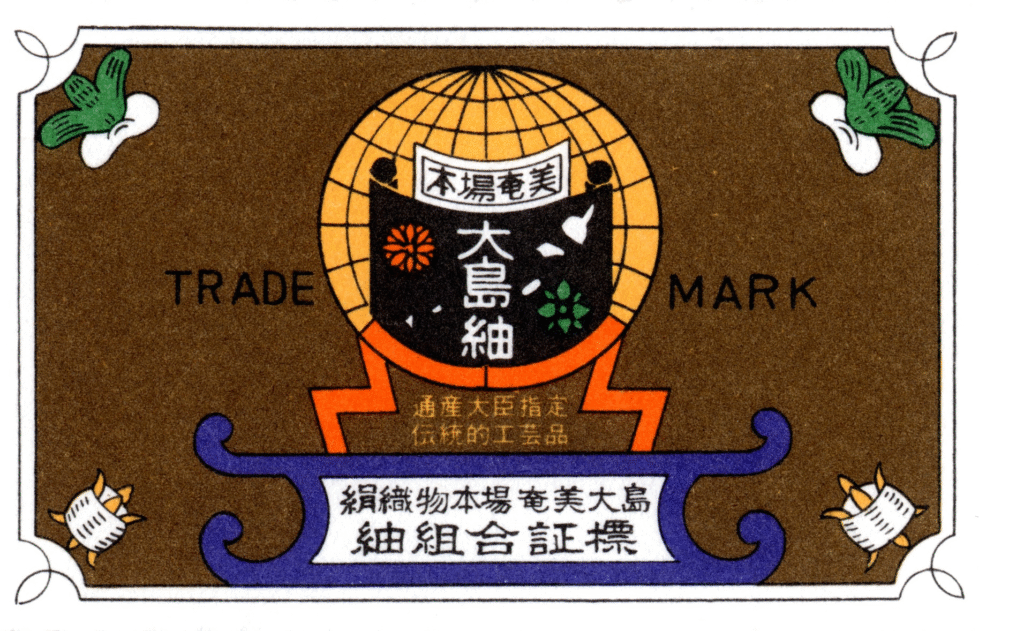
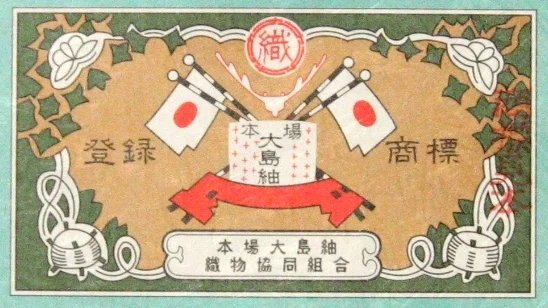
産地をつなぐ、奄美の泥と神業の絣
大島紬の魂とも言える、あの深く艶やかな黒色。これは、奄美大島に自生する「テーチ木(車輪梅)」と、鉄分を豊富に含む島の泥田なくしては生まれません。驚くべきことに、鹿児島市で製造される大島紬もまた、この奄美の自然の恵みを受けています。鹿児島市の作り手は、糸をわざわざ奄美大島へ送り、現地の専門の職人によって泥染めを施してもらうのです。染め上がった糸を再び鹿児島へ持ち帰り、織りの工程に入る。産地は違えど、その原点には奄美の自然への共通の敬意と信頼関係が存在します。
そして、もう一つの神髄である精密な「絣(かすり)模様」。図案をもとに、染め残す部分を綿糸で固く括る「締め機(しめばた)」の工程、そして染め分けた絣糸を経糸(たていと)・緯糸(よこいと)に用い、織機の上で寸分の狂いなく柄を合わせる「絣合わせ」の技術。この「二度織る」と称されるほどの複雑な手仕事は、両産地の職人たちが等しく探求し、その技を競い合う、大島紬の品質を支える共通の基盤となっています。
島の自然と城下町、それぞれの美意識
大島紬の魅力は、その文様の多様性にもあります。奄美大島で生まれる柄は、その豊かな自然からインスピレーションを得たものが多く見られます。ハブの背中とソテツの葉がモチーフとされる「龍郷柄(たつごうがら)」や、竹ザルをかたどった「秋名バラ(あきなばら)」などは、島の生命力や人々の暮らしを色濃く映し出しています。
一方、鹿児島市では、かつての城下町としての歴史を背景に、より洗練された意匠や、武家文化の流れを汲むようなモダンで多様なデザインが発展してきました。多くの作り手が集まる都市としての環境が、新しい感性や多様なニーズに応える柄を生み出す土壌となったのです。奄美の自然主義的なデザインと、鹿児島の都市的な洗練。二つの産地がそれぞれの風土と歴史の中で育んだ異なる美意識が、大島紬の世界をより豊かで奥深いものにしています。
未来へ、二つの故郷が紡ぐ一枚の布
図案の作成から、絣締め、泥染め、そして織り。数多くの専門職人の手を経て、半年から1年をかけてようやく一枚の布が完成します。その全ての工程に、奄美大島と鹿児島市、両産地の職人たちの妥協なき情熱と、長年培われた知恵が注ぎ込まれています。
後継者不足やライフスタイルの変化という共通の課題に直面しながらも、二つの産地は互いに連携し、大島紬という文化遺産を未来へ繋ぐ努力を続けています。一枚の布に込められた二つの故郷の物語。それこそが、現代において大島紬が放つ、最も尊い輝きなのかもしれません。
解説ポイント①:二つの産地、一つのブランド
「本場大島紬」というブランドは、奄美大島と鹿児島市という二つの産地によって支えられています。これは、国が「伝統的工芸品」として指定する際に、両方の地域を産地として認定したことに基づきます。消費者が目にする製品には、それぞれの産地を証明する証紙が貼られています。
- 地球印:奄美大島で製造されたことを示す、丸い地球儀のデザイン。本場奄美大島紬協同組合が発行します。
- 旗印:鹿児島市で製造されたことを示す、織り機の旗をモチーフにしたデザイン。鹿児島県本場大島紬織物工業協同組合が発行します。
これらの証紙は、それぞれの組合が設ける厳しい品質基準をクリアした製品にのみ与えられます。素材(絹100%)、染色法(先染め)、手織りであることなど、多くの条件を満たさなければなりません。二つの証紙の存在は、大島紬が単一の産地による独占的なものではなく、両地域が公式な作り手として品質を保証し、共にブランド価値を築いていることの証左です。
解説ポイント②:奄美の自然が生む「泥染め」の絆
大島紬の代名詞である「泥染め」は、奄美大島の特異な自然環境の産物です。まず、島に自生するテーチ木(車輪梅)の煮出し液で絹糸を繰り返し染め、タンニン酸を含ませます。その後、島の古代地層に由来する鉄分豊富な泥田に糸を浸して揉み込むと、化学反応で深く美しい黒色に染まります。
この工程は、鹿児島市で大島紬を製造する上でも不可欠です。鹿児島市のメーカーは、自らで染めるのではなく、織りの前段階で糸を奄美大島に送り、現地の泥染め専門の職人に染色を依頼します。この分業体制は、大島紬の品質の核となる「泥染め」が、奄美大島の地理的・自然的な特性に深く根ざしていることを示しています。産地は異なっても、最高の品質を求めるがゆえに、奄美の自然の力に敬意を払い、その恵みを共有しているのです。この「泥染め」こそが、二つの産地を結びつける強い絆と言えるでしょう。
解説ポイント③:歴史と風土が育む文様の多様性
大島紬の柄は、それぞれの産地の歴史的背景と風土を反映し、多様な発展を遂げてきました。
- 奄美大島:柄の多くは、亜熱帯の豊かな自然や、古くからの島の暮らしに由来します。代表的な「龍郷柄」は、猛毒を持つハブを魔除けとして図案化し、ソテツの葉と組み合わせたものとされ、生命力と畏敬の念が込められています。また、「秋名バラ」の「バラ」が竹製のザルを意味するように、生活に密着した道具がデザインの源泉となっています。
- 鹿児島市:薩摩藩の城下町として、また大島紬が集積・販売される中心地として栄えた歴史を持ちます。多くの職人や図案家が集まり、より幅広いニーズに応える形で、伝統的な柄を洗練させたり、全く新しいモダンな柄や幾何学模様などが数多く創作されたりしてきました。武家社会の美意識を反映した格調高い柄や、より都会的でシャープなデザインなど、そのバリエーションは多岐にわたります。
このように、奄美の土着的な魅力と、鹿児島の都市的な洗練が融合し、競い合うことで、大島紬の文様の世界は広がりと深みを増しているのです。
注釈:もう一つの大島紬
本記事では主要な二大産地である奄美大島と鹿児島市を中心に解説しましたが、隣接する宮崎県都城市においても、草木染めを特徴とする大島紬がごく少量ながら生産されていることも知られています。これは泥染めとはまた異なる、独自の魅力を持つ絹織物です。
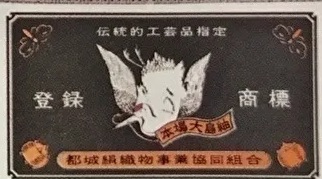
参考文献
- 本場大島紬(ほんばおおしまつむぎ)の特徴 や歴史 – KOGEI JAPAN(コウゲイジャパン)
- 大島紬とは|本場大島紬織物協同組合
- 本場大島紬について | 本場奄美大島紬協同組合
- 泥染め|奄美大島紬村・大島紬製造工場観光庭園
- 産地の特徴 | 藤絹織物株式会社
【English Article】
A Shared Legacy of Silk: The Pride and Essence of Oshima Tsumugi from its Two Homelands, Amami and Kagoshima
Supple, lightweight, and passed down through generations, Oshima Tsumugi is a silk fabric that Japan proudly presents to the world. It is counted among the “world’s three great textiles,” alongside Gobelins tapestry from France and Persian carpets from Iran. Adding to its profound allure is the fact that this work of art is created with the passionate dedication and pride of artisans in two primary production centers: Amami Oshima island and Kagoshima City, both in Kagoshima Prefecture. Artisans from both regions respect each other’s skills, at times competing, while steadfastly preserving a tradition said to be 1,300 years old.
- Two Production Centers, One Brand: The significance of the two distinct weaver’s cooperatives in Amami Oshima and Kagoshima City, and the two types of certification seals that guarantee authenticity.
- The Bond of “Mud-Dyeing” Born from Amami’s Nature: Though the production sites differ, the soul of Oshima Tsumugi—its jet-black color—shares a common root, created by the mud and techigi trees of Amami.
- A Diversity of Patterns Nurtured by History and Climate: A beautiful rivalry of aesthetics, from Amami’s patterns that reflect the island’s nature to Kagoshima’s sophisticated patterns from the former heartland of the Satsuma domain.
A Tradition Woven with Pride in Two Lands
The history of Oshima Tsumugi is ancient, with its origins on Amami Oshima. However, during the Edo period, when it was prized as a tribute to the Satsuma clan that governed Amami, its techniques were also transmitted to Kagoshima City, the center of the Satsuma domain. The anecdote of the “Tsumugi-wearing ban,” which forbade islanders from wearing it, speaks to how special Oshima Tsumugi was.
Today, products guaranteed as “Honba Oshima Tsumugi” (Authentic Oshima Tsumugi) are made in these two locations: Amami Oshima and Kagoshima City. Each has its own cooperative—the Honba Amami Oshima Tsumugi Cooperative Association and the Kagoshima Prefecture Honba Oshima Tsumugi Textile Industry Cooperative Association. Products that pass their rigorous inspections are affixed with different certification seals: a globe mark for Amami-made products and a flag mark for Kagoshima-made ones. These seals are a testament to the pride and responsibility of each production area, allowing consumers to choose the highest quality Oshima Tsumugi from two trusted sources.
Amami’s Mud and Miraculous Kasuri: The Threads that Connect the Regions
The deep, lustrous black color that is the soul of Oshima Tsumugi cannot be created without the techigi (Sharimbai, or Yeddo Hawthorn) trees native to Amami Oshima and the island’s iron-rich mud paddies. Remarkably, Oshima Tsumugi produced in Kagoshima City also relies on this gift from Amami’s nature. Makers in Kagoshima City send their threads to Amami Oshima to be mud-dyed by specialized local artisans. The dyed threads are then brought back to Kagoshima to begin the weaving process. Though the production sites are different, a shared respect for Amami’s nature and a relationship of trust lie at their core.
Furthermore, the precise “kasuri” (ikat) patterns, another essence of the textile, are a shared foundation. The complex manual labor involved—from the “shimebata” process of binding threads with cotton to resist dyeing, to the “kasuri-awase” technique of perfectly aligning the pre-dyed warp and weft threads on the loom—is often described as “weaving twice.” This intricate craftsmanship is a common ground that artisans in both regions equally pursue and compete in, supporting the quality of Oshima Tsumugi.
The Island’s Nature and the Castle Town: Respective Aesthetics
The charm of Oshima Tsumugi also lies in the diversity of its patterns. Patterns originating from Amami Oshima are often inspired by its rich natural environment. The “Tatsugo pattern,” said to be based on the back of a habu snake and the leaves of a cycad palm, and the “Akina Bara pattern,” which depicts a bamboo basket, vividly reflect the island’s vitality and daily life.
Meanwhile, Kagoshima City, with its history as a former castle town, has developed more refined motifs and a wide variety of modern designs, some influenced by samurai culture. Its environment as a city where many creators gather has become fertile ground for producing patterns that meet new sensibilities and diverse needs. The naturalistic designs of Amami and the urban sophistication of Kagoshima—the different aesthetics nurtured by the climate and history of each production area—make the world of Oshima Tsumugi even richer and more profound.
To the Future: A Single Cloth Woven by Two Homelands
From creating the design to kasuri-binding, mud-dyeing, and weaving, a single bolt of cloth is finally completed after six months to a year, passing through the hands of numerous specialized artisans. Every step is infused with the uncompromising passion and long-cultivated wisdom of craftsmen from both Amami Oshima and Kagoshima City.
While facing common challenges such as a shortage of successors and changing lifestyles, the two production centers cooperate, striving to connect the cultural heritage of Oshima Tsumugi to the future. The story of two homelands woven into a single piece of cloth—perhaps that is the most precious brilliance that Oshima Tsumugi radiates today.
Analysis Point ①: Two Production Centers, One Brand
The “Honba Oshima Tsumugi” brand is supported by two production centers: Amami Oshima and Kagoshima City. This is based on the Japanese government’s designation of both regions as official production areas under the Act on the Promotion of Traditional Craft Industries. Products you see are affixed with a certification seal to prove their origin.
- Globe Seal: A design of a round globe, indicating that the product was made in Amami Oshima. It is issued by the Honba Amami Oshima Tsumugi Cooperative Association.
- Flag Seal: A design featuring a loom’s flag, indicating that the product was made in Kagoshima City. It is issued by the Kagoshima Prefecture Honba Oshima Tsumugi Textile Industry Cooperative Association.
These seals are only given to products that meet the strict quality standards set by each cooperative. Many conditions must be met, including the material (100% silk), dyeing method (yarn-dyed before weaving), and being handwoven. The existence of two seals is proof that Oshima Tsumugi is not the exclusive product of a single region, but that both areas act as official makers, guaranteeing quality and jointly building the brand’s value.
Analysis Point ②: The Bond of “Mud-Dyeing” Born from Amami’s Nature
The “mud-dyeing” (dorozome) synonymous with Oshima Tsumugi is a product of Amami Oshima’s unique natural environment. First, silk thread is repeatedly dyed in a boiled extract of the native techigi tree to infuse it with tannic acid. Then, the thread is immersed and massaged in an iron-rich mud paddy derived from the island’s ancient geological stratum, causing a chemical reaction that dyes it a deep, beautiful black.
This process is also indispensable for producing Oshima Tsumugi in Kagoshima City. Instead of dyeing the threads themselves, manufacturers in Kagoshima send them to Amami Oshima to be dyed by specialized mud-dyeing artisans there. This division of labor shows that the core quality of Oshima Tsumugi’s “mud-dyeing” is deeply rooted in the geographical and natural characteristics of Amami Oshima. Despite being in different locations, they pay respect to the power of Amami’s nature and share its blessings to achieve the highest quality. This “mud-dyeing” process is a strong bond that connects the two production centers.
Analysis Point ③: A Diversity of Patterns Nurtured by History and Climate
The patterns of Oshima Tsumugi have evolved in diverse ways, reflecting the historical background and climate of each production area.
- Amami Oshima: Many of its patterns originate from the rich subtropical nature and the ancient lifestyle of the island. The representative “Tatsugo pattern” is believed to be a design of the venomous habu snake as a protective charm, combined with cycad leaves, imbuing it with a sense of vitality and awe. Similarly, in the “Akina Bara” pattern, “bara” means bamboo basket, showing how everyday tools are a source of design inspiration.
- Kagoshima City: With its history as the castle town of the Satsuma clan and a central hub where Oshima Tsumugi was collected and sold, Kagoshima has a different background. Many artisans and designers gathered here, refining traditional patterns and creating numerous new, modern, and geometric designs to meet a wider range of needs. Its variations are extensive, including elegant patterns reflecting the aesthetics of samurai society and more urban, sharp designs.
In this way, the indigenous charm of Amami and the urban sophistication of Kagoshima merge and compete, expanding the depth and breadth of the world of Oshima Tsumugi patterns.
Addendum: Another Oshima Tsumugi
While this article focuses on the two primary production centers of Amami Oshima and Kagoshima City, it is also known that a small amount of Oshima Tsumugi, characterized by botanical dyes, is produced in the neighboring city of Miyakonojo in Miyazaki Prefecture. This silk textile possesses its own unique charm, distinct from the mud-dyed variety.
References
- Honba Oshima Tsumugi | KOGEI JAPAN
- What is Oshima Tsumugi | Honba Oshima Tsumugi Textile Cooperative Association
- About Honba Oshima Tsumugi | Honba Amami Oshima Tsumugi Cooperative Association
- Mud Dyeing | Amami Oshima Tsumugi Village & Oshima Tsumugi Manufacturing Factory Tourist Garden
- Characteristics of Production Areas | Fujikinu Orimono Co., Ltd.



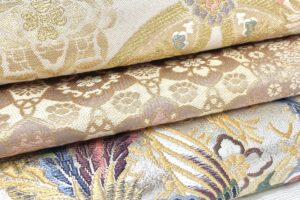
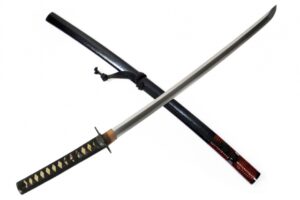
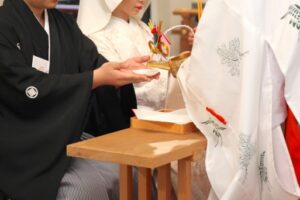
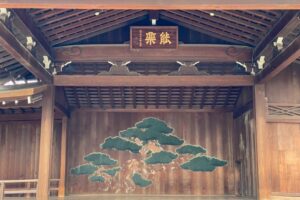
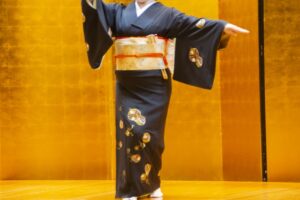

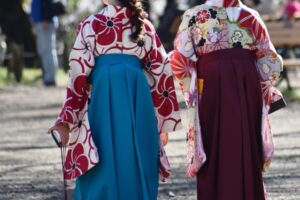
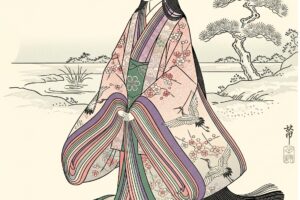
コメントを残す